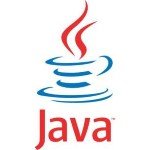Javacodegeeks
2M
436

Image Credit: Javacodegeeks
Why Swing Still Matters in 2024: Legacy Maintenance vs. Rewrite Costs
- Swing, a Java-based GUI framework introduced in 1998, continues to thrive in financial and enterprise environments, with 62% of financial desktop applications still utilizing it.
- Legacy Swing applications remain prevalent due to stability, custom UI components, backend integration, user familiarity, and limited downtime tolerance.
- Migrating from Swing to JavaFX can be complex due to architecture mismatches, learning curves, partial interoperability, and performance differences.
- A case study of migrating a portfolio management dashboard from Swing to JavaFX resulted in significant challenges, leading to the project's pause.
- Rewriting a legacy application involves high costs, feature parity challenges, data flow migration, testing, user retraining, and budget concerns.
- Modernizing Swing by improving user experience, updating UI, and refactoring backend code is a cost-effective approach for many companies.
- Swing still evolves through community efforts like FlatLaf, the IntelliJ Platform, and open-source Swing enhancements, indicating its ongoing relevance.
- Swing remains a valuable asset for enterprises, offering reliability and efficiency, making it a practical choice over newer tools in certain scenarios.
- Before opting to rewrite an application, businesses should consider modernization benefits, user preferences, and the reliability of existing solutions like Swing.
- Swing's resilience in 2024 showcases its ability to empower businesses without causing unnecessary disruptions, highlighting its enduring significance in the software development landscape.
Read Full Article
26 Likes
For uninterrupted reading, download the app